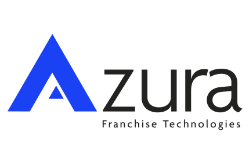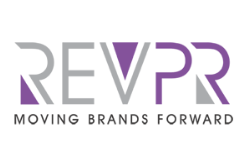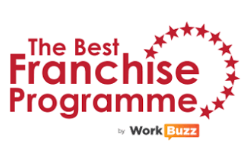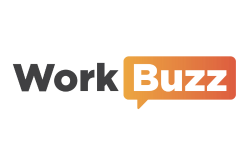Putting your brand on Instagram can be tricky. Not only must you showcase your franchise favourably but also navigate the treacherous waters of fake accounts, influencers and your own employees’ social media habits – all of which risk ruining your brand if you’re careless.”
Nevertheless, when Snap-on UK, the tools franchise, joined the platform in 2017, it was certain Instagram was the right fit for its marketing efforts. “It’s one of the most heavily used social media platforms globally and now has over one billion users, which is why Snap-on UK absolutely had to have a presence on this platform,” explains Dominik Berry, marketing manager at Snap-on UK. More importantly, the franchise understood the average Instagram user was just the kind of person it was looking to reach. “We knew that the largest age groups within Instagram were the [25 to 34-year-olds] with the second largest being [people between 18 and 24] years,” Berry continues. “This meant that the platform was the perfect place to engage with young technicians and mechanics who are our current and future customers.”
That being said, Snap-on UK avoided diving in at the deep end. “In the early days there was a fair amount of testing the water with some posts but we quickly learnt what our audience do and don’t engage with,” explains Berry. Using Instagram’s statistics to find out what stories yielded maximum engagement, the franchise has organically grown its number of followers to over 19,000 without using any paid ads. “We’re now growing at a rate of over 1,000 followers a month and I have absolutely no doubt [it won’t] be long until Instagram overtakes Facebook as our largest social media platform,” Berry says.”
Speaking of Facebook, Snap-on UK soon realised successful content differs considerably between the two platforms. “Instagram is based more around photography and sharing images and short videos with cool and funny filters applied to them,” Berry advises. “It’s certainly not the place for us to share our extended videos or longer, educational articles.” On the back of this realisation, Snap-on UK is using Facebook for new product launches, informative videos and the occasional meme, leaving Instagram to be “a more fun and relaxed environment,” according to Berry.
But what sort of businesses would fit in on Instagram? “Companies who have an aspect of their business which makes for great photographs,” quips Andy Barr, managing director of 10 Yetis Digital, the public relations and social media agency. Lifestyle brands work particularly well as they enable companies to not just focus on the product but also on scenery, active workshop photos or even travel images. “Photographs portraying people’s aspirations are brilliant motivating factors which will have younger consumers wanting to replicate what they’re seeing, hopefully leading to product sales for you,” explains Barr.
Indeed, McDonald’s is treating its 3.4 million Instagram followers to succulent shots of its menu offerings, occasional skits with comedians and customer profiles, showcasing the diversity of the people visiting the golden arches around the world. Similarly, Anytime Fitness UK‘s feed is full of clients working out, staff members offering advice and motivational posters. And kitchen makeover franchise Dream Doors‘ feed showcases the kitchens customers can get. The point: Instagram can be used in numerous ways to boost your brand if you can find a way to visualise it. “Make sure you post the right content, to the right person, at the right time,” summarises Berry.
No matter how your content looks, you’ll need to grow your following. Several brands have attempted to strengthen their Instagram marketing efforts by enlisting influencers. However, while having a celebrity or even a C-list star talk directly to their followers about your product can be a great cost-effective way to gain traction, Barr is weary of using this strategy. “Influencers have to be absolutely transparent about the use of paid advertising and I would say that, although influencer marketing absolutely has its place and can prove hugely successful in generating traffic and sales, be cautious as costs can be high and results aren’t guaranteed,” he explains.
Take Grown-ish actor and former Kourtney Kardashian beau Luka Sabbat for example. In October 2018 it was reported he’d been hired by Snap Inc., Snapchat’s parent company, to promote its failed range of Spectacles, or tech sunglasses. According to a lawsuit filed in New York, he was supposed to promote the product in four posts but allegedly only bothered to post two and without clearing them with the PR team beforehand as required. So Snap Inc. sued him for $60,000.”
But he’s not the only influencer who’s failed to influence in the right way. In 2017, Logan Paul angered his sponsors, followers and any decent individual in general by publishing a controversial video of himself next to a dead suicide victim in the Japanese Aokigahara forest. And discussing 2019 plans, Paul said he would “go gay” for the month of March, which also resulted in backlash. Another off-putting example is the many social media users who used hashtags related to the California wildfires in 2018 to promote brands and their own content. This keyword-squatting strategy understandably enraged numerous followers.”
In other words, choosing the wrong influencers to promote your brand could land you in big trouble. “Make sure you know who you’re dealing with, that you know what good engagement really looks like and always make your requirements for copy, photograph style, time and date of posting crystal clear to avoid confusion or an influencer trying to pull the wool over your eyes,” advises Barr.”
Other brands may be tempted to use bots to boost engagement with their brands. However, Barr would discourage you from going down that route. “Instagram is all about building engaged communities and using bots or buying followers doesn’t comply with their regulations,” he explains. While you can certainly expect your following to grow by doing so, Instagram will eventually find these accounts in one of its regular fake account cullings and then they’d be gone again. “We would strongly advise against buying followers and using bots,” insists Barr.”
However, it’s not just external factors you have to be weary of – problems could also arise internally. Usually, the official feeds are reasonably easy to gauge. “However, the matter becomes more complicated when it comes to those [employees and clients] who don’t use official accounts but rather post about the business via their own accounts,” warns Julian Cox, director at iLaw, the law firm. While it’s become easier to pick up on derogatory comments from both customers and your own employees, Cox reminds you that – irritating as they might be – staff’s comments might be protected under the Human Rights Act 1998, which contains a clause that gives staff a right to private and personal lives. “[Similarly,] employers should also consider the Regulation of Investigatory Powers Act 2000, which spells out the extent to which employers can monitor or record communications that take place through the company’s networks,” he advises.”
Taking these regulations into consideration, franchises should create a social media policy to help guide them. “This should make it clear who’s responsible for posting on the company’s official feeds and their behaviour when doing so and the consequences for failing to meet up to these standards,” Cox explains. The policy should also include guidelines for staff who aren’t directly in charge of the official account. For instance, this can be things like ensuring they don’t share any prohibited or sensitive information online, adding a caveat that their views are their own and not the company’s, that they should avoid producing content associated with the firm without prior approval. “While at times it may be difficult to monitor and enforce these rules, it’s important that you clearly spell out your expectations and the actions that could be taken if the policy is disregarded,” Cox says.”
Indeed, Instagram may be challenging with all the hurdles franchises have to tackle. Nevertheless, there are clear benefits of getting on there and doing it right.”

Eric Johansson
As web editor and resident Viking, Johansson ensures Elite Franchise is filled with engaging and eclectic entrepreneurial stories. While one of our most prolific franchise writers, he has sharpened his editorial teeth by writing about entertainment and fitness. Follow him on Twitter at @EricJohanssonLJ to catch up with his stream of consciousness.

Eric Johansson
As web editor and resident Viking, Johansson ensures Elite Franchise is filled with engaging and eclectic entrepreneurial stories. While one of our most prolific franchise writers, he has sharpened his editorial teeth by writing about entertainment and fitness. Follow him on Twitter at @EricJohanssonLJ to catch up with his stream of consciousness.


































